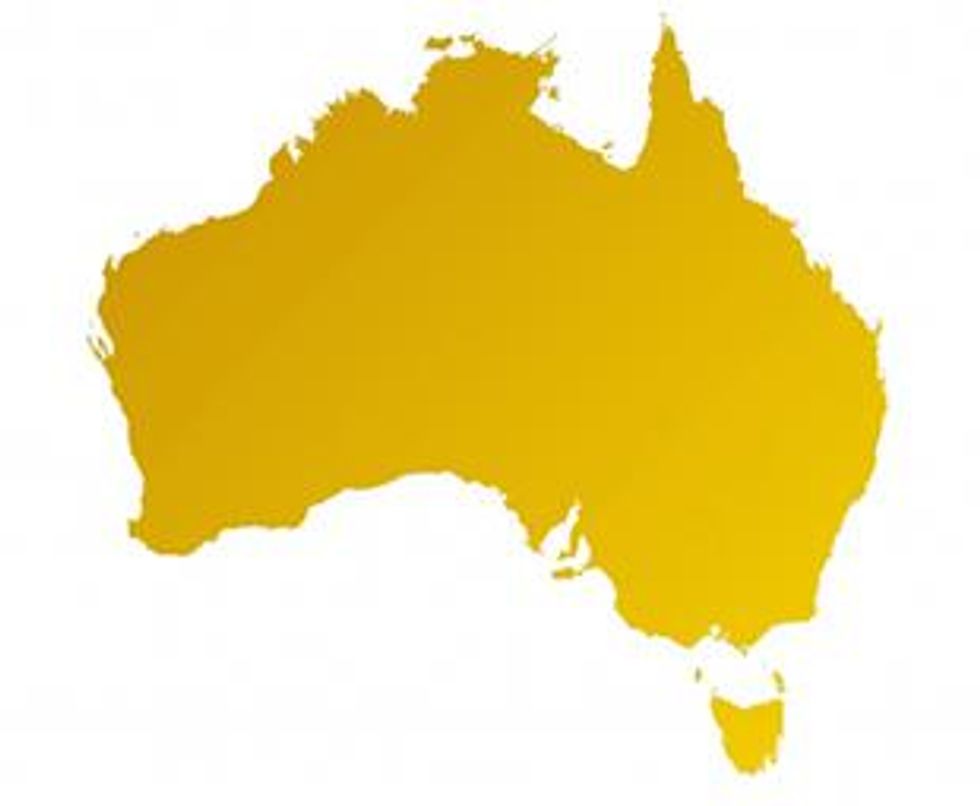About 60 percent of Australia’s gold resources are located in Western Australia, with the remainder in all other States and the Northern Territory. According to USGS estimates, Australia hosts approximately 11 percent of the world’s economic gold resources and is ranked second after South Africa.
According to USGS estimates, Australia hosts approximately 11 percent of the world’s economic gold resources and is ranked second after South Africa. Last year it was also the world’s second largest producer following China. About 60 percent of Australia’s gold resources are located in Western Australia, with the remainder in all other States and the Northern Territory. Gold has been ranked fifth highest value in the list of resources exported by Western Australia, behind iron ore, crude oil, aluminum and liquefied natural gas (LNG).
Much of Western Australia’s gold deposits are hosted by greenstone belts located in the Yilgarn Craton. Gold deposits are generally hosted by north northwest trending structures, which host gold in steeply dipping lenticular ore bodies, similar to deposits in Ghana, Zimbabwe and Tanzania.
Production, Development and Exploration
The Kalgoorlie Super Pit Gold Mine is the country’s biggest open pit gold mine. Super Pit produces up to 850,000 ounces of gold every year and it was the largest mining center in Australia. The Super Pit is operated by Kalgoorlie Consolidated Gold Mines (KCGM) and owned 50/50 by Newmont Mining Corporation (TSX:NMC) (NYSE:NEM) and Barrick Gold Corporation (TSX:ABX) (NYSE:ABX).
With gold production starting last February at the Boddington Gold Mine, owned by Newmont, the eventual scale of the operation is expected to eclipse even the Kalgoorlie Super Pit once it reaches production capacity and it should have an operating life of more than 24 years. The company expects that Boddington will produce more than 1 million ounces of gold per year. Newmont also operates the Jundee gold mine in the Mid West region which produced 412,300 ounces of gold last year.
Barrick has tremendous exposure to gold production in the state with more than 1.3 million ounces of gold per year collectively being mined from Darlot-Centenary, Granny Smith, Lawlers and the Kanowna Belle operations, in addition to the Plutonic gold mine located to the north west near the shire of Meekathara. The former four operations are located within the same Goldfields-Esperance region as the Super Pit and individually produce more than 250,000 ounces of gold per year and the latter gold mine is situated in the Mid West region of Western Australia and last year produced over 144,000 of gold for Barrick.
The second largest gold producing mine in Western Australia last year was the Telfer operation, owned by Newcrest Mining Ltd. (ASX:NCM) (PINK:NCMGY). Last year, the mine produced 688,900 ounces of gold and is also a strong producer of copper. It is located in the Great Sandy Desert and is not connected to the Western Australian power grid but instead produces its own power from LNG via a 450 kilometre pipeline and an on site power station with production capacity of 138 mega watts. The focus of the operation has changed from open pit mining to underground mining with forecast mine life expected to 2017 for the underground operations and 2023 for the open pit operations. In addition to Australia the company maintains a significant presence in Indonesia and Papua New Guinea.
The South African mining company Gold Fields Limited (NYSE:GFI) operates the St. Ives mine located 20 km south east of Kambalda and the Agnew mine located in close proximity to Barrick’s Lawlers operation. During the current financial year St. Ives produced 421,000 ounces and Agnew produced 165,200 ounces of gold. The company has exposure to projects in Ghana and Peru.
The Sunrise Dam mine is AngloGold Ashanti’s (NYSE:AU) only current existing operation in Australia and produced 401,000 ounces of gold last year representing approximately 9 percent of the company’s annual global total. A second Australian project, the Tropicana mine, is located in close proximity and although it is in the development stage it is expected to open in 2013.
Avoca Resources Ltd. (ASX:AVO) operates both the Higginsville and South Kalgoorlie gold mines which the company anticipates to produce over 280,000 ounces from two processing hubs, a reserve base in excess of 1 million ounces and a resource base of 4 million ounces. The successful takeover of Dioro this year was subject to a takeover war between Avoca and rival Ramelius Resources which lasted for almost one year and has made the company the largest gold tenement holder in the area spanning from Kalgoorlie to Kambalda. The company also has exposure to uranium and additional gold assets via joint venture projects.
St Barbara Limited (ASX:SBM) operates the Marvel Loch mine located 30 km south of Southern Cross in the Wheatbelt area. Last year the underground mine produced 156,105 ounces of gold. The Gwalia mine is the company’s cornerstone asset, with 1.8 million ounces of gold in reserves and an indicative mine life in excess of nine years. The Gwalia operation was originally established in 1897 by Herbert Hoover, later serving as the 31st President of the United States. The company also expects the King of the Hills project to commence production next June, producing 55,000 ounces of gold per year for five to six years.
Norton Gold Fields Limited (ASX:NGF) produced slightly over 140,000 ounces of gold this year combined from its open and underground operations at the Paddington Mine, located in relative close proximity to the Super Pit. The company expects the current mine life to exceed 10 years of production. Norton has additional exposure to Australian assets via developing a resource at Mount Morgan located in Queensland. The company anticipates the project will increase gold production by 30,000 to 35,000 ounces per year and diversify production.






